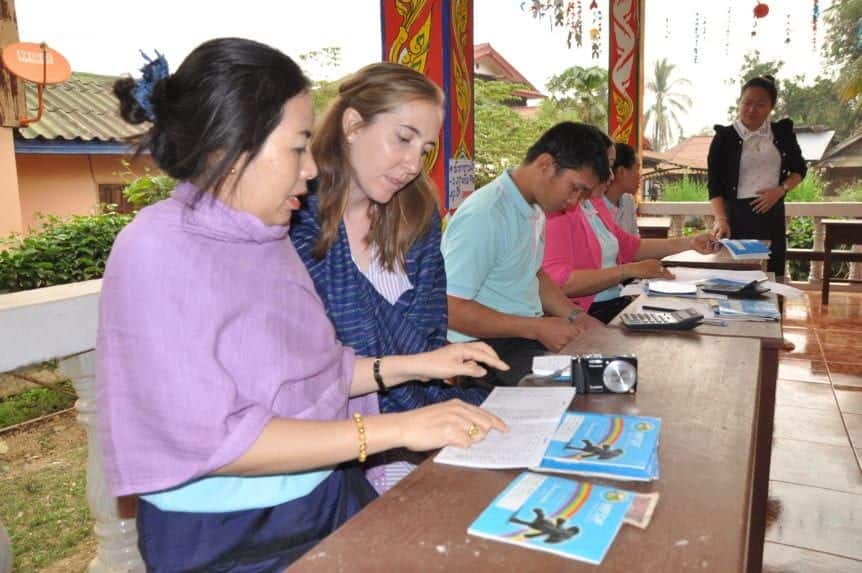Whole Planet Foundation’s funds are provided to our partner microfinance institutions (MFIs) to be distributed to borrowers as microloans or in-kind productive assets (like cows, sewing machines, or solar lamps). For most of our partners, the loan is given in a “credit-plus” context. This means that the MFI would provide supportive financial and/or non-financial products as well as credit.
Some types of supportive financial products that various partners offer are savings, financial literacy, insurance, business development, agriculture market linkages and links to bank accounts and loans at more formal institutions. Non-financial services can range from health/life-skills trainings, access to clean energy products, health clinics, scholarships and tutoring for clients’ children and vocational skills training.
None of our microfinance partners provide all of these services, but each partner provides the support they can, given the regulations in the country, their level of expertise, access to funds and the ability to balance the costs clients pay and their expectations of high quality service.
In this cross-regional blog, we’re taking a deep dive into savings and what this looks like across various partners in our network.
Whole Planet Foundation’s microfinance partners typically promote savings in one of four ways:
-
- Promoting savings within the graduation program
- Strengthening Savings and Loan Groups (SLGs) where clients save informally within their community
- Linking clients to bank accounts at formal institutions
- Directly providing savings services to clients
Building the savings habit as part of the Graduation Program:
WPF has recently extended our funding to also include Graduation programming, a comprehensive, targeted and time-bound approach to reach households who are too poor to invest loan capital in a business. Forming clients into Savings and Loan Groups (SLGs) is typically a key step (among many) in this methodology.
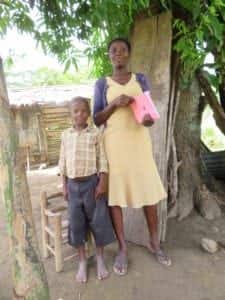
A Fonkoze Foundation client participating in the CLM program.
Fonkoze Foundation
In Haiti, for example, WPF supports Fonkoze Foundation’s Chemen Lavi Miyò (CLM), or “Pathway to a Better Life” program. Regarding the savings component of CLM, Fonkoze Foundation received training in the SLG methodology from CARE International. In Haiti, these (SLG) associations consist of 20-30 neighbors who meet weekly for a year. At each meeting, members buy from one to five shares at a price that the group itself sets at its first meeting. The money from share purchases then becomes a loan fund. Members can borrow up to three times their savings, repaying the loans with interest over three or five months.
At the end of the year, each member receives her savings along with the profit the SLG has earned by making loans. All CLM members are organized into SLGs during the early months of the 18-month CLM graduation program. The associations are popular among CLM members, their case managers, and other members of the community who participate.
BRAC Bangladesh
In Bangladesh, BRAC’s Ultra-Poor Graduation (UPG) Program also utilizes SLG type groups called Village Organizations, (VO’s) where participants are encouraged to save. They maintain a formal savings account with programme staff support. Developing a savings habit is seen as a key element in promoting resilience to shocks and, ultimately, sustainable graduation. Participants’ savings are matched by the programme to promote savings behaviour, enhance financial security and resilience, and enable future investments
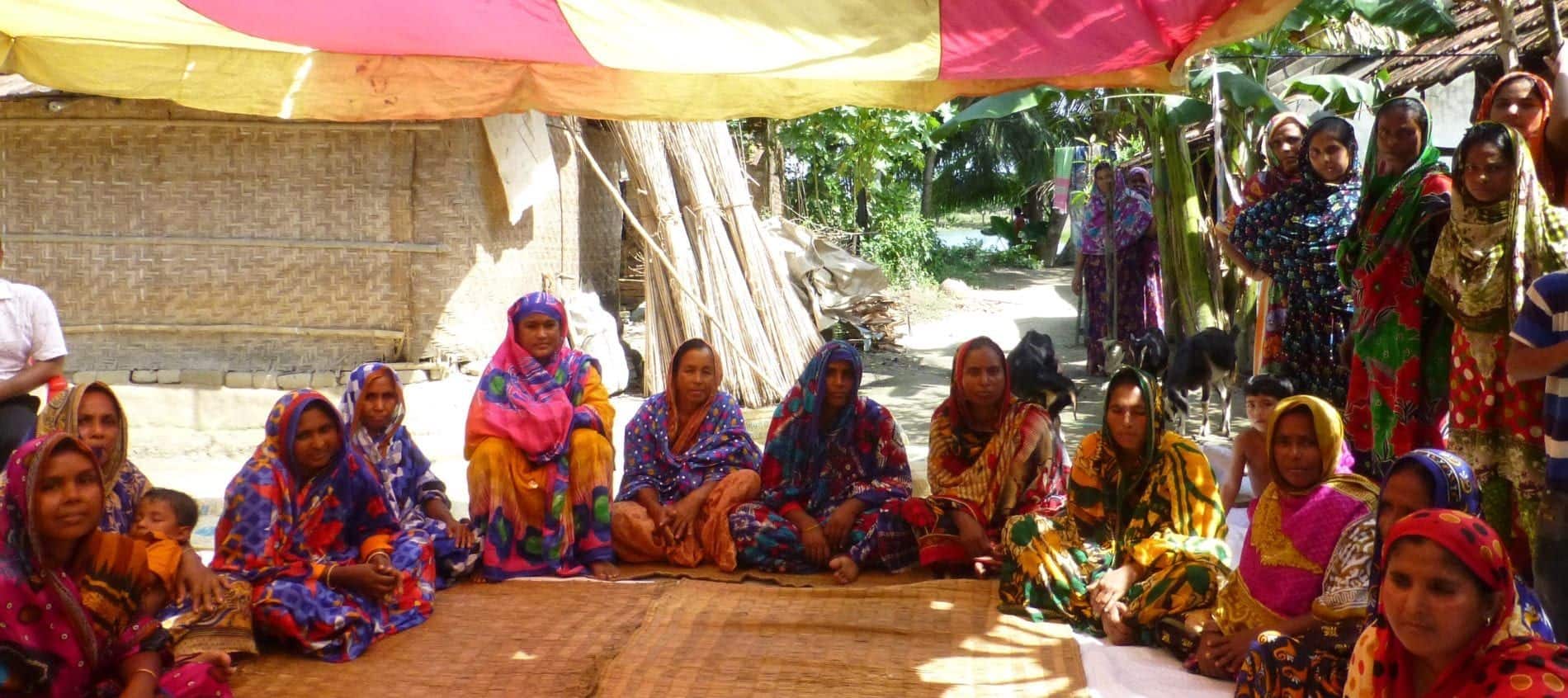
BRAC Ultra-poor Graduation Programme participants’ meeting in Bangladesh.
Leveraging client savings through SLGs
One of the defining features of SLGs is that once properly formed and trained, they can operate independently of NGOs and MFIs. Many of WPF’s partners leverage SLGs as part of their own group-based lending methodology. The linkage is not necessary for the SLG to function, but it can provide enhanced services. Just as a linkage between a SLG and a MFI can provide access to a greater choice of loan products (such as larger capital amounts with longer repayment periods), the MFI can also support the savings activities of the SLG. And according to research published recently by the SEEP Network, combining savings groups with other economic development activity creates a greater likelihood of various empowerment outcomes for women compared to stand alone savings groups.
Small Enterprise Development
For example, WPF’s partner Small Enterprise Development (SED) in Thailand was founded by Catholic Relief Services and therefore all their loan groups operate under a SLG model. SED provides ongoing technical assistance to the SLG’s management committee to encourage proper fund management. SED also leverages their software system to calculate the distribution of SLG profits based on the amount each member has contributed as savings during the year. Lastly, SED encourages the SLG to allocate a part of their annual savings dividend into initiatives such as compensation for the group management committee, buying productive assets for the SLG, establishing group funds for loan default and group welfare.
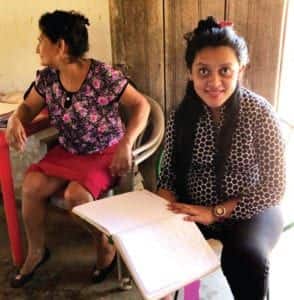
Yoselis of the Paz y Union Caja Rural keeps the minutes of her group’s monthly meetings.
FUNDER
In Latin America, WPF’s MFI partner FUNDER works closely with the “Cajas Rurales” (a type of SLG in Honduras). One of the technical components that FUNDER covers is calculating a sustainable and viable interest rate for the SLG. When MFIs strengthen the methodologies and capacity of the SLG, it keeps the group running smoothly and ensures that clients can continue to grow their savings with this approach.
The majority of FUNDER Honduras’ lending activity is via the “Cajas Rurales” autonomous organization construct. FUNDER works with pre-established Cajas and they also collaborate with communities to establish new ones. While FUNDER views the multiple-member Caja Rural as its single client, they do collect the individuals’ information. Nevertheless, it is the Cajas Rurales that submit the consolidated credit application to FUNDER, administer the individual loans to members and non-members, and set the individual terms. FUNDER has developed loan products that address the needs of their clients, so the loan terms can range from standard monthly loans to balloon payments for loans specifically needed for agriculture, for example. FUNDER works with Cajas Rurales so they can understand and successfully execute the loan administration process, and so they are able to calculate a sustainable and viable interest rate.
MFIs linking clients to traditional banks for saving services
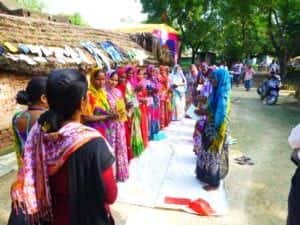
Microcredit clients of CASHPOR in India.
While some partners leverage informal SLG’s as a way for clients to save, other WPF partners link clients to traditional banks to access savings services. The availability of traditional banks willing to partner with MFI’s depends on the country and regional context.
CASHPOR
In India there is a big push from the government for banks to do “priority sector lending.” One way for banks to meet these targets is to provide funds to MFIs who then manage these additional funds like their normal group lending. As part of this partnership, WPF MFI partner CASHPOR and their Banking Correspondent (BC) partners also established a way for these clients to easily save with the BC banks as well. This is a value-added service for the CASHPOR clients because with the status of an NGO MFI, CASHPOR is not permitted to collect savings directly.
MFIs directly providing savings services
Offering direct savings services usually requires a sophisticated organization who has received a deposit-taking license from the appropriate regulator. The requirements for this type of status vary tremendously from country to country, but usually the MFI would have to prove the strength of their own financial institution before the government agrees that the MFI should be trusted with a client’s hard-earned savings. As our network MFIs typically run on very tight margins, trying to provide quality loan services at the lowest prices, it can take years to build up the capital requirements that are often necessary to become a regulated deposit-taking institution. For example, WPF partnered with BRAC Uganda starting in 2010 and they have just recently transformed into a fully deposit-taking institution.
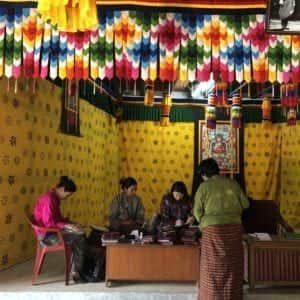
RENEW microfinance in Bhutan.
RENEW Microfinance
When permitted to do so, some partners have integrated savings directly into their methodology. For example, WPF’s partner in Bhutan, RENEW Microfinance was founded in collaborations with the German Savings Banks Foundation for International Cooperation (SBFIC) and offers a savings-led approach to microfinance. In Bhutan, clients must first slowly save for up to five months before they can access a loan. During the savings period, clients participate in financial literacy sessions. The idea is for RENEW to promote savings and financial literacy to very rural areas where people don’t otherwise have easy access to a bank. And RENEW pays 5% on all client deposits. After establishing savings services, those clients who need additional business capital are eligible to borrow a loan. Currently, only about 14% of RENEW’s members are active borrowers.
Yikri, ID Ghana, PAMF and GHAPE
In West Africa, many of WPF’s partners have a long history of offering direct savings services. Like RENEW, the Entrepreneurs du Monde network programs such as Yikri in Burkina Faso and ID Ghana usually integrate small, incremental mandatory savings as a component of their loan programs. While Premiere Agence de Microfinance (PAMF) in Cote d’Ivoire and GHAPE in Cameroon heavily promote voluntary savings, where entrepreneurs are given the opportunity to save but not required to do so.
WFDF and KOMIDA
Voluntary savings can be further promoted with special purpose savings. Another SBFIC supported MFI, WFDF in Laos, promotes voluntary savings by offering special purpose accounts. The “Elephant Savings” product is a special account where WFDF clients can save for their children’s education. WFDF issues special savings passbooks (with the elephant and rainbow on the cover) for this purpose. WFDF is working to replace manual processes and transaction entries in all savings books by attaching a transaction receipt to the client’s book. And KOMIDA in Indonesia offers a popular feast-day savings product, where clients receive a higher interest rate if they agree to lock-in savings in preparation for holiday expenditures.
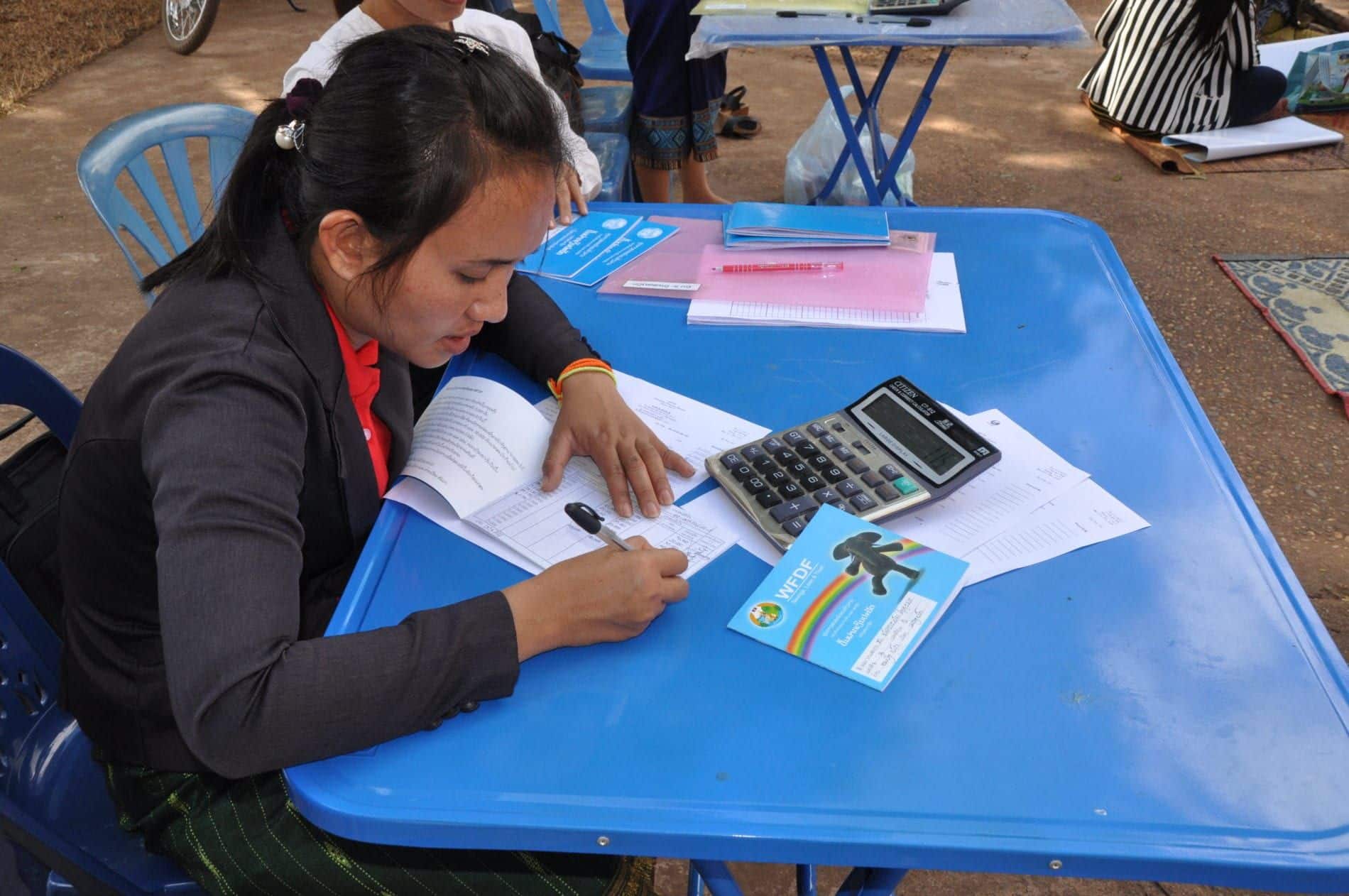
The elephant savings passbook helps microcredit clients of WFDF in Laos save to educate their children.
Key Takeaways
A microfinance institution’s focus on savings can be a great building block for financial literacy and further credit-plus services for their clients. And when such a socially focused, deposit-taking MFI still has a shortfall of loan capital, Whole Planet Foundation’s funds can help fill that gap.
However, if a MFI is very successful at collecting deposits, then they don’t necessarily need the loan capital that we provide. Therefore, many of our partners access capital from Whole Planet Foundation exactly because they lack the sophistication of a deposit-taking institution. Perhaps they do not have the authority to collect savings in their country, or the total savings collected from the populations they serve is much smaller than their clients’ demand for loans, or in some cases the microfinance provider has grown out of a massive SLG/cooperative structure and therefore profits are distributed back to clients annually rather than reinvested in the portfolio. In any of these cases, the socially focused MFI can still provide savings services to customers by creating links with SLGs or banks.

